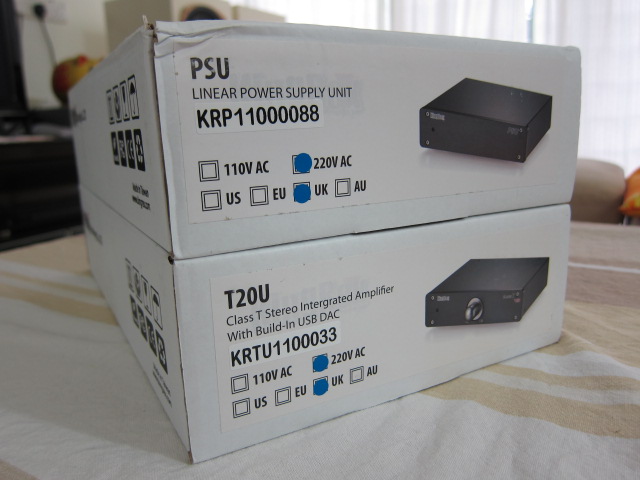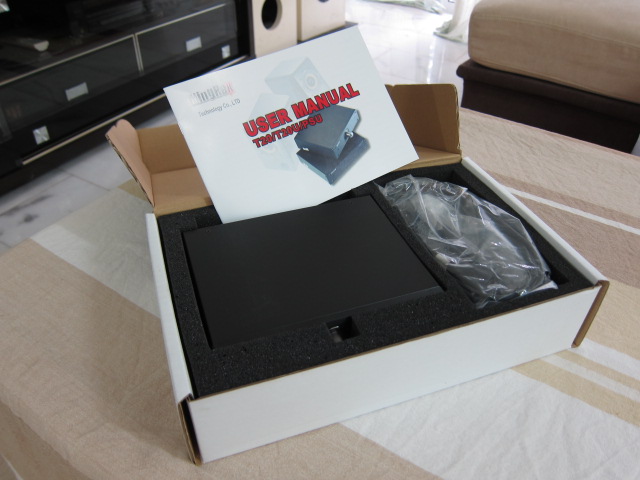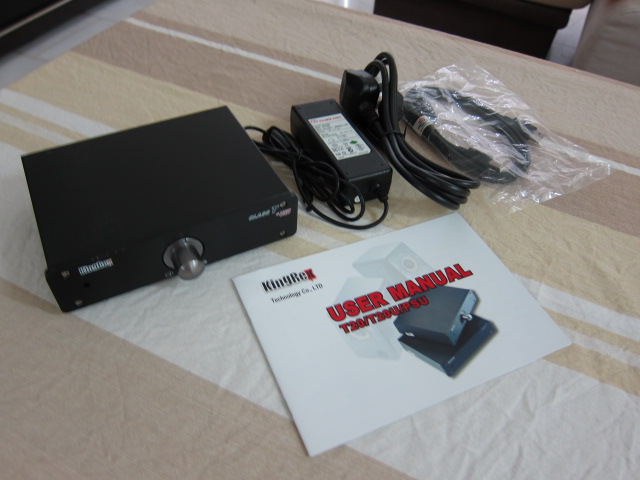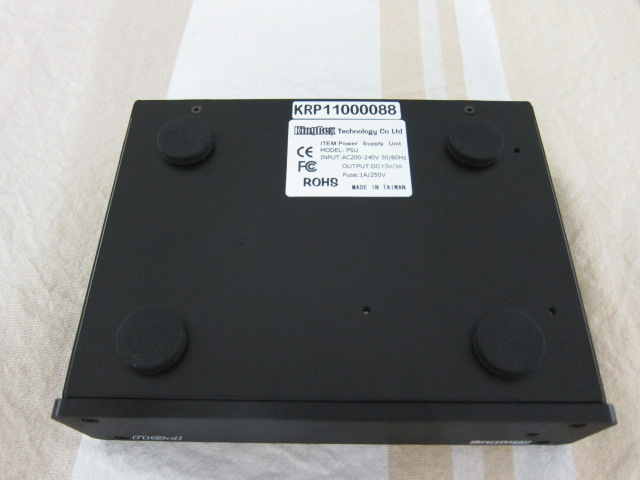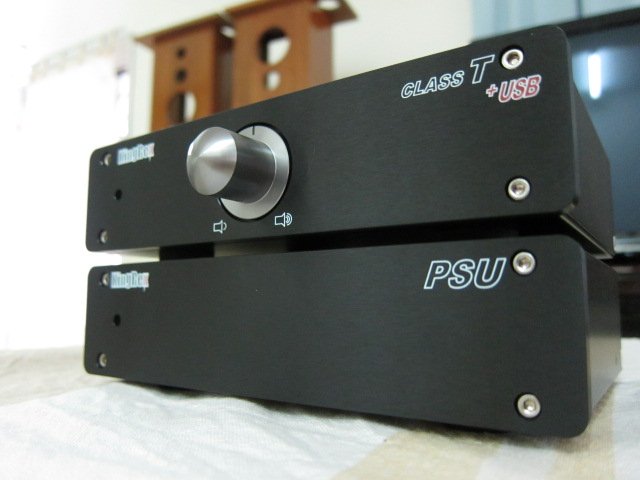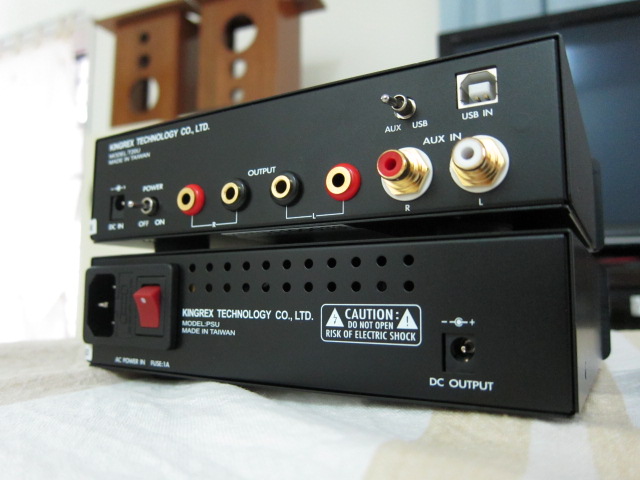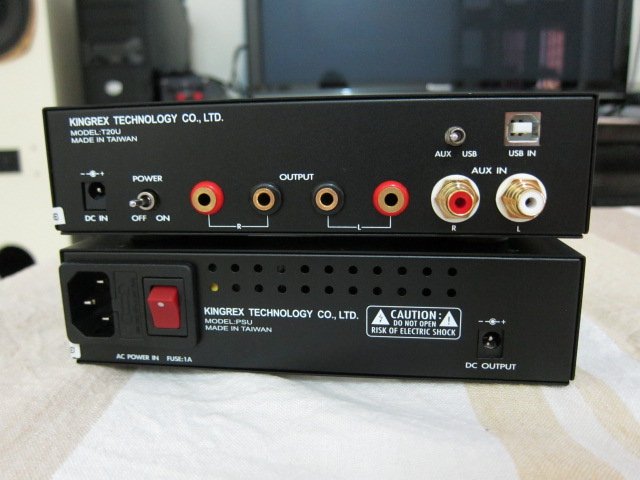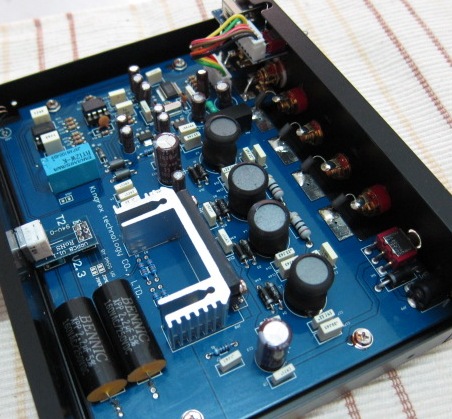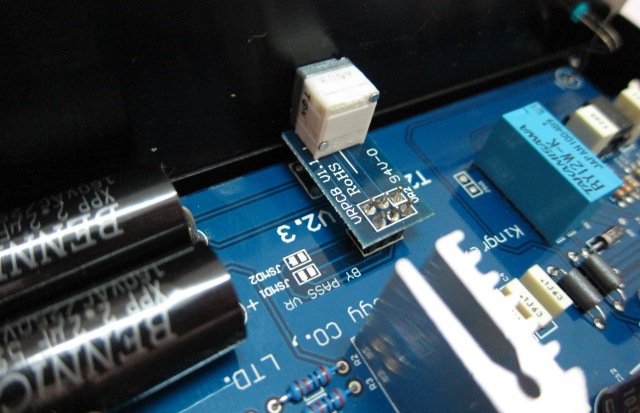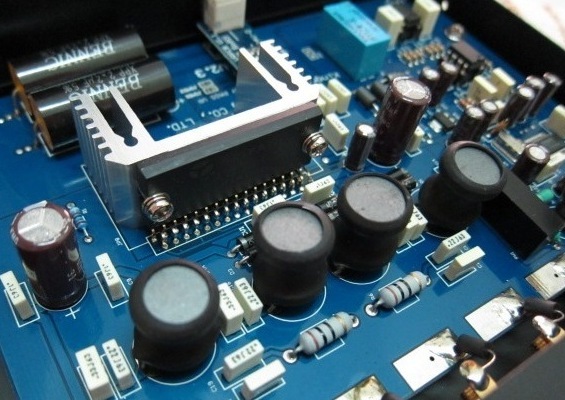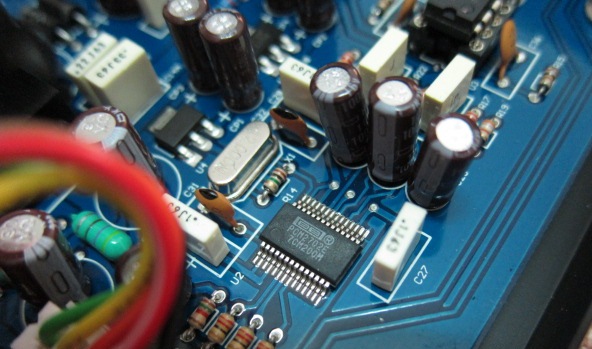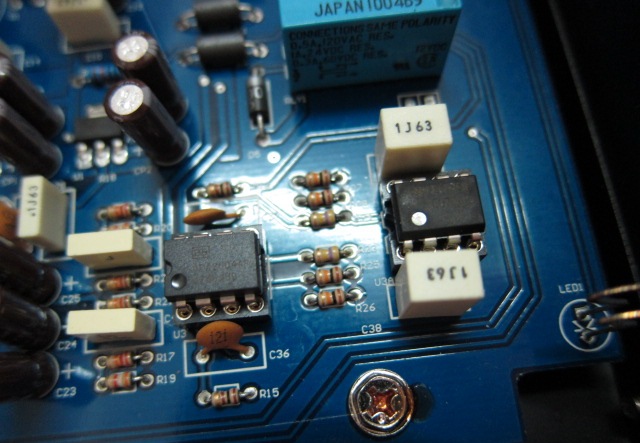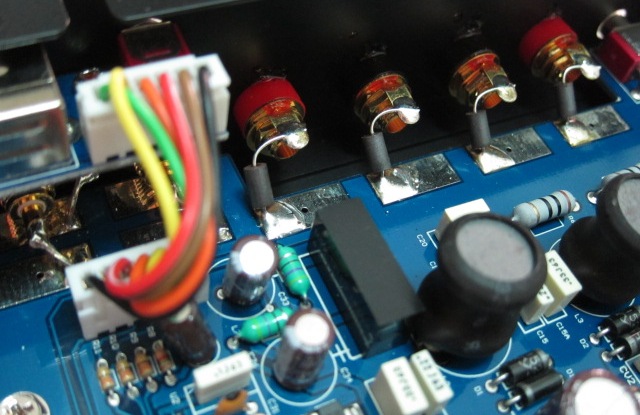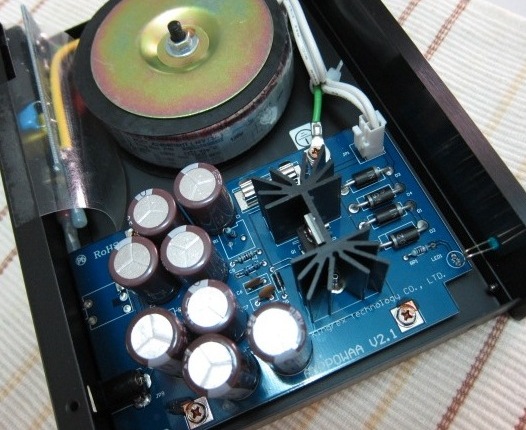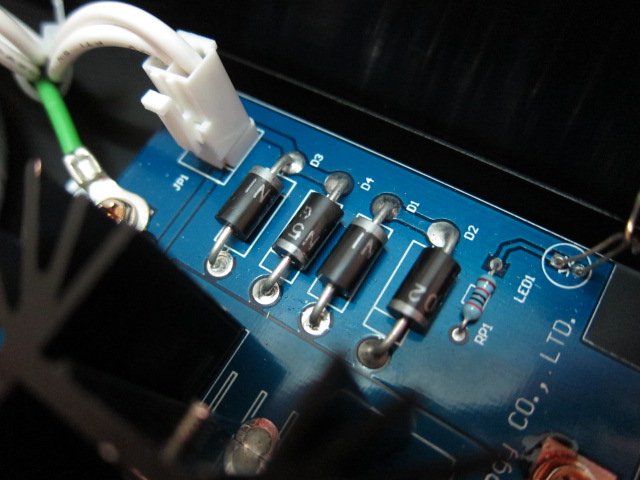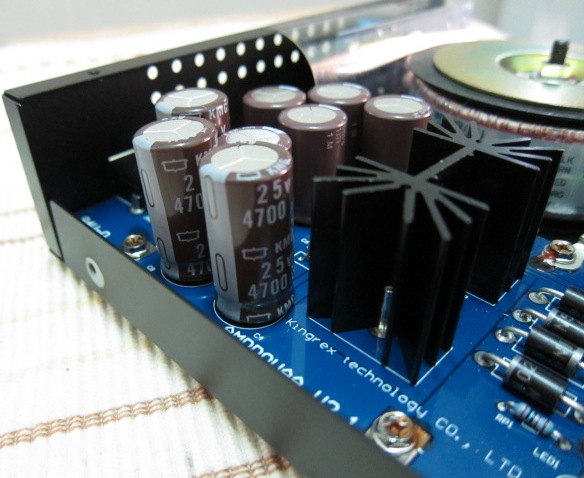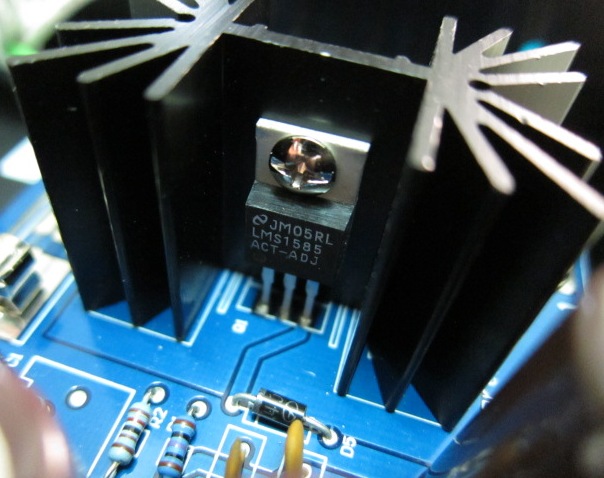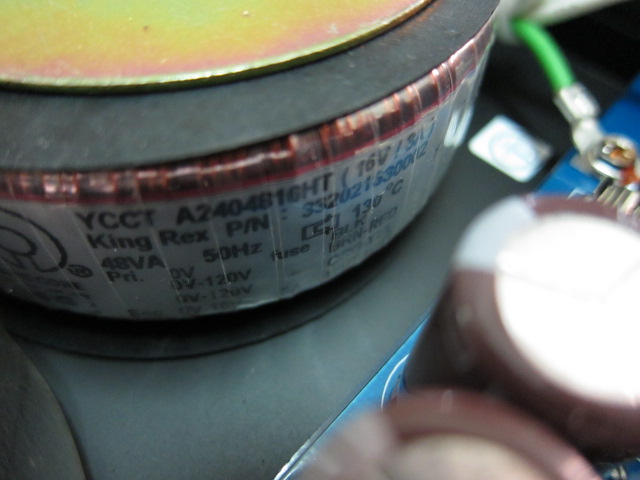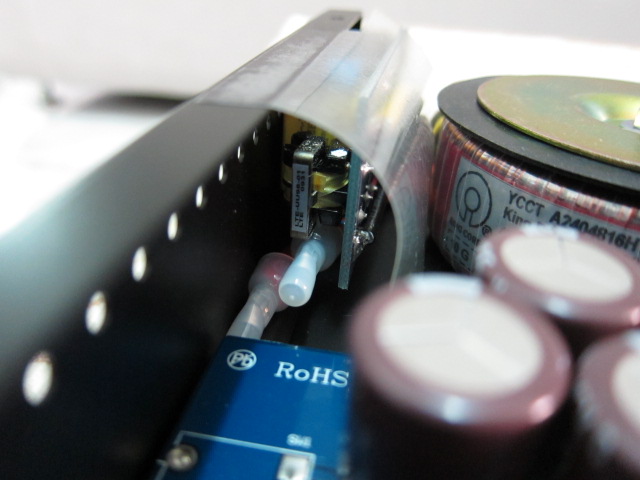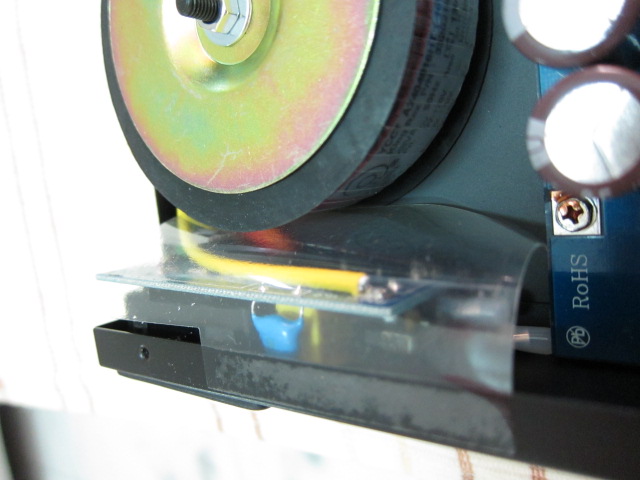|
KingRex T20U Review
KingRex T20U Review part 1! KingRex T20U review? Hmm... that's interesting! I've used a lot of DIY modules and units but not a complete product before. This would be an interesting experience. Let's look at some background before we start. The Tripath fame started when someone tested the little Sonic Impact T-amp and was mesmerized by it by the sound quality over the price ratio. The T-amp is significantly better after some modifications to fully explore the capabilities of the Tripath chip. The T-amp swiped the audio world by storm and a lot of Tripath based amplifier emerged since then. Before I did the KingRex T20U review, I’ve played with many T-amp’s from different manufacturers, from Damien’s fully modified SLA battery powered dual-mono DIYParadise Charlize, Connexelectronic Tripath modules, to Arjen Helder’s MKIII TA2020 module and etc. All of them shared very similar base characteristics but with different flavors due to the implementation and system design. I’m a tube-head and I still like the sound characteristics the T-amp possesses. I contacted Christine Wu from KingRex to ask her about the KingRex UD384 DAC but was offered the KingRex T20U review first for instead as the UD384 was out of stock! The couple arrived 4 days after getting the confirmation from Christine. The 2 units are well packed in a single box with 1 layer of bubble wrap in the outer carton box. The PSU box is dented slightly but that does not affect the internal at all. The units arrived for review is the 220Vac UK model. 110Vac version is available for other countries too.
The KingRex T20U review amplifier and PSU are housed snugly in custom made high density ~1” sponge, protecting it from the harsh shipping environment. I do wish that there is a protective water proof plastic or foam bag sealing the unit to keep it from getting wet just in case the unforeseen circumstances happen.
The KingRex T20U review unit is accompanied with a user manual that is common for T20, T20U and PSU, together with a certified USB cable, UK power cord and an AC/DC brick supply (SMPS power adaptor) that we usually use for notebooks. The brick supply is to be used with the KingRex T20U if the user does not purchase the PSU. The manual is quite simple with very little information written about the unit. Anyhow, it has only 1 digital USB input and 1 analogue input. All the input and output ports are clearly labeled and color coded. It should be hard to figure it out ourselves.
This is the bottom view. Thumbs up for KingRex to get the unit CE, FC and ROHS certified! Both KingRex T20U review unit and PSU come with 4 hard foam / rubber type of support. The units rest firmly on the rack without any unevenness or wobbly feel. One could tune the sound with different spikes, cones or stands to their liking.
Did you notice the Class-T + USB on the fascia of the KingRex T20U? That’s the differentiation on the front between the T20U and T20. The front panel is made of high quality aluminum plate that feels nice to the touch. The body is made of 2 U-shaped mild steel plates mounted together. It has solid feel when assembled. The steel plate is the thicker type instead of the flimsy version we usually see on entry level home theater receiver or amplifier. Due to the thicker panels and small size, the chassis does not resonate as much like what the others do.
At the back, there are gold plated speaker jacks for a pair of speakers, 2 input sources (1 digital via USB and 1 analogue via gold plated RCA jacks), 1 DC jack for power supply and 2 switches (1 power On/Off & 1 source select). Bare wires or spades do not apply here. It has an IEC mains input socket integrated with a power switch.
The speaker jacks are only meant for banana plugs although 4-5 way binding posts are preferred. There are no external fuse sockets on T20U though. The DC PSU jacks and power switches are the standard types. It would be preferable to have higher quality higher current type for DC PSU connection and switches since power delivery will impact the sound substantially, but, looking at the price this guy is fetching, I might be asking for too much! Anyhow, this opens up opportunities for modders! Bear in mind that modifications void the warranty!
For the eagle eye readers, they might have noticed the differences between the T20 and T20U, apart from the added USB DAC section! I do not have the T20 but there are plenty of pictures available on the internet for comparison. The KingRex T20U topology is as follow: Analogue / (USB input with LPF / DC Servo) -> input selector -> volume pot -> amplifier IC Before we move on to review the other components, let’s have a look at the core of this amplifier, the Tripath TA2020-020 Class-T Digital Audio Power Amplifier IC. It integrates the digital controller together with the power FETs in a single package. I needs only a single instead of bi-polar supply and therefore battery operations is applicable here for absolute best performance and off-the-grid application. Although it states 20W into 4 Ohm, but the actual usable power with acceptable performance is lower. Reasonable output power with decent THD+N of 0.1% is 7W into 8 Ohm load and 11W into 4 Ohm load with power supply of 13.5Vdc tested with 1 kHz signal. One can push the output power further by increase the power supply voltage to 14.6Vdc (Do this at your own risk! Absolute maximum allowable is 16Vdc) and that would get them 9.5W and 16.5W respectively. Efficiency of the amplifier is quite high at 88% typically. We don’t have to worry much about heat buildup and heat sinking. I’ve seen some designs out there without heat sink but it is safer and recommended to have one implemented, just as in the case for T20U. Warning: The KingRex T20U (Tripath TA2020-020 chip to be exact) operates in BTL (bridge-tied-load) fashion. Do not connect the negative / black speaker terminal to ground as a tweak to improve the sound! You risk damaging the amplifier if you do so.
The input DC blocking, AC coupling capacitor or the input filter capacitor has been upgraded from the bi-polar electrolytic to higher quality Bennic 2.2uF metalized polypropylene film capacitor. According to Bennic Components, this series are the professional audio crossover use. The D.F. is 0.07% maximum at 1 kHz test frequency. The input capacitor is one most important component for Tripath amplifiers as analogue signal needs to go through it to the chip and KingRex has done the right thing to pay attention to it. The size of the capacitor determines the low frequency cut-off of the amplifier. The larger the value, the lower it goes. With 2.2uF, the resultant Fc is around 3-4Hz. The TA2020-020 chip is famous for the switch on “thump” and therefore an over-large capacitor is not recommended if there is no protection mechanism being designed into the amplifier, like a delay relay to connect the speakers only after 1-2 seconds upon switch-on. The volume control has been upgraded to higher quality potentiometer (Christine – can you provide the model and manufacturer used?) instead of the usual potentiometers that 1st, have large mismatch between channels, 2nd, noisy or crackles when turned, or 3rd, have large noise at extreme ends. I’ve tested some Alps stereo 100kR units with huge tolerance between channels. 1 channel shows 88k and the other shows 105k. Ultimately, I would recommend stepped attenuator with hand or machine matched resistors for best performance. The relay used is the Takamisawa plastic sealed type with gold overlay silver-palladium as contact material, model RY12W-K that is capable of 20 million operations minimum as signal switch. Signal quality degradation is minimal here.
On the other hand, at the output filter section, high current ferrite core inductors are used as the second order filter. Class-T or class-D switching amplifiers require their outputs to be filtered or demodulated to remove the carrier frequency and leave only the analogue audio signal to transmit to the loudspeakers. The design here determines the frequency cut-off of the filter (2nd order filter). The inductance and current capacity of the inductor used in this filter will determine the final results and therefore has utmost importance to the design as premature saturation of the inductor core will impact the output. If you see small size SMT (surface mount technology) inductor here, better avoid it like plague. There are designs using air-core inductor, toroid micro-metal inductor and such. All have their pros and cons, and fits the purpose. One really has to compare the different inductors sonically to determine which is superior. I wonder if KingRex has done their homework to compare the various types and decide on the best option. Decent bypassing or decoupling can be seen on all the ICs and power supplies with film caps. Since the TA2020-020 operates at relatively high switching frequencies, this is important to decouple the power supply noise and prevent supplies to go above and below the ground potential by the energy in the output inductors. It would also prevent or absorb voltage spikes on the power supply caused by overshoots and undershoots at the output of the amplifier. The next thing we want to look at is the integrated DAC of T20U. Burr-Brown PCM2702 from Texas Instruments is used here. Texas Instruments does not recommend this USB DAC chip for new designs as it is already phased out. The newer USB DAC chips are the PCM2704, PCM2705, PCM2706 and PCM2707. Don’t be sad that it is not using the latest chip. Be happy since the PCM2702 has better specifications compared with the new TI USB DACs with dynamic range of 100dB and SNR of 105dB coupled with THD+N of 0.002%. It is a proven design too with many good sounding DACs in the marketing using this very USB DAC chip. This USB DAC is only capable of 16-bit 32 / 44.1 and 48 kHz. Please remember that when playing from your digital source. It uses TI’s Enhanced Multi-level Delta-Sigma Modulator with 8x oversampling digital interpolation filter and an analog output low-pass filter. Some might pass on this since they are looking or wanting 24-bit / 192 kHz capable USB DACs. Stop and ask yourself; how many high resolution 24-bit / 192 kHz software you have now? 99% of my collections are 16-bit / 44.1 kHz files. I want but I do not need a 24-bit / 192 kHz. For the puny little add on sum I need to pay for T20U, I would take it anytime with the added flexibility. One can purchase the KingRex UC192 or UD384 if high resolution playback is needed in later stage. Pictured here are the output stage filter and DC servo circuit for the KingRex T20U review unit we got. We heard that there are different opamps used on different versions. TI Burr-Brown OPA2134 or OPA2604 (depends on which version you get) operational amplifiers are used as the output filter and the TL072 low noise JFET operational amplifiers (opamps) are used in the DC servo circuit. All the TL072, OPA2134 and OPA2604 are high performance audio opamps with ultra-low diction, low noise operation, high output drive capability and excellent DC performance.
All three are more than sufficient for audio frequency use. The difference in performance will be greatly affected by the actual implementation, for example the decoupling, component usage, circuit design, PCB / tracks layout and etc. What we can see in KingRex T20U review unit is that carbon composition resistors are used at the DAC section with high frequency polypropylene / ceramic caps as decoupling / bypass. Carbon composition resistors are famous for the analogous sound when used. This could be their sound tuning methodology to get the characteristics they look for. On the output stage, one can see really see that great care has been placed here too. The pads for the speaker terminals are huge with ample surface connection from the connecting wire to the speaker terminals. A piece of ferrite bead (black cylinder in the picture) is slotted there to reduce the high frequency noise further. For absolute audio performance, everything little things count and they add up to significant results! Alright, that’s all with the KingRex T20U review section. Let’s move to the PSU side now. 48VA toroid transformer is used, connected to 3A discrete silicon rectifier diode in bridge configuration. Followed are banks of 2200uFx5 at input stage and 4700uFx3 at output stage with famous Nippon Chemi-con KMH series 105C power supply capacitors with very high CV values and ripple current capabilities. The total sum-up capacitance is 25,100uF. That is a lot of capacitance for a high efficiency ~20W power class-T amplifier! The output is stabilized at 13Vdc with current capability of 3A. On top of the high capacitance power supply, a National Semiconductor LMS1585 5A low dropout fast response regulator is used. These fast transient response regulators are usually used for microprocessor or PC applications. Using it here is overkill but it definitely gives a high current fast power supply for the KingRex T20U amplifier. This provides a huge reservoir of energy when current is in demand, for example on low audio frequency reproduction. This is a closer look at the 48VA toroid transformer for the KingRex PSU. On the other hand, discrete EMI/RFI suppressor circuit (Christine – please confirm this) are implemented at the mains input. What made up of the EMI/RFI suppressor circuit are usually inductors and class X/Y capacitors that filters, suppresses, cancels and shunts the mains differential and common mode noises. This prevents EMI/RFI from entering the KingRex PSU as well as prevents rectifier switching noise from polluting the mains. Improper implementation could pollute the ground line as well. What we usually see on the market are integrated single unit EMI/RFI suppressors. With KingRrex creating this out of discrete components is something rare at this price point. That’s it for now on the technical KingRex T20U review. The KingRex T20U review on audio performance will be published after running in the KingRex T20U review unit and PSU for 100 hours minimum in part 2. From our experience with Tripath based amplifiers, run-in time of 100 hours are recommended before serious evaluations as they keep on improving. Reviewer: Ken Packaging and shipping: Item is double boxed with a little bubble wrap filling the outer box. Inner box appeared to be slightly dented but the equipment suffered no harm. Shipping is swift. It took ~3-4 days to arrive in Penang from Taiwan. Customer service: Christine Wu from KingRex is very friendly and responsive. All questions are responded swiftly. She took the initiative to send the units with correct 220Vac voltage without even needing me to request for it. Partnering equipment: Source: Sony CDP-XE310, Compaq Mobile Workstation 8510W notebook Digital: KingRex UC192, Super Pro CS4398 DAC with dedicated PSU, DIY Paradise Monica 2 with MeanWell SMPS and Monica 3 DAC with dedicated PSU Amplification: DIY 12SN7 pre-amp, Arjen Helder MKIII Tripath TA2020 amplifier with MeanWell SMPS, Connexelectrioncs Tripath TA2022 amplifier, Hypex UCD400HG with ColdAmp SPS80 SMPS, 6B4G SET amplifier, SunAudio SV-2A3 amplifier Speakers: Tannoy System 800, Tannoy DCC-3149, Tannoy HPD385, Zu Audio Soul Superfly, B&W 601S2 Cables: Anti-Cable, AudioQuest CV4, AudioQuest G-Snake, Art Chamber WE speaker cable and interconnect Power conditioner: Monitor Acoustic line filter (Taiwan), DIY balanced isolation system, Topaz 1kVA Ultra Isolation End of KingRex T20U Review Part 1 - performance review coming up soon after the run-in is done! KingRex T20U review - part 2What do you think of this post?Do you have the same thoughts? Share it! Return from DIY Audio Guide/HIFI Blog/ KingRex T20U Review to DIY Audio Guide Return from DIY Audio Guide/HIFI Blog/ KingRex T20U Review to DIY Audio Guide HIFI Blog
|
